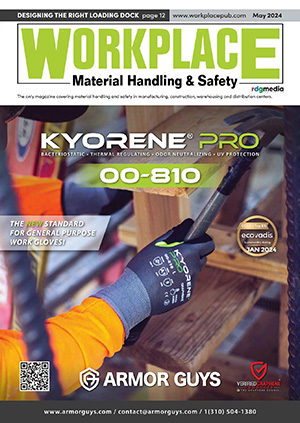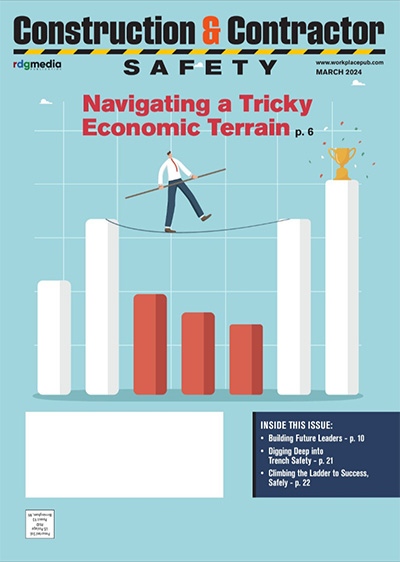How to Prevent Manual Handling Injuries in the Workplace
By: Richard J. Perkins, Contributor
 Manual handling is often associated with a variety of physical activities like pushing, pulling, lifting, lowering, carrying or moving a load of objects. However, it’s not only limited to heavy industry. Even workers in office environments also engage in manual handling like typing, sorting, writing and putting boxes on the shelves – anything that requires repetitive movements of arms, legs and backs. There are some forms of manual handling in every workplace that can lead to fatigue and injuries when performed frequently or incorrectly.
Manual handling is often associated with a variety of physical activities like pushing, pulling, lifting, lowering, carrying or moving a load of objects. However, it’s not only limited to heavy industry. Even workers in office environments also engage in manual handling like typing, sorting, writing and putting boxes on the shelves – anything that requires repetitive movements of arms, legs and backs. There are some forms of manual handling in every workplace that can lead to fatigue and injuries when performed frequently or incorrectly.
To control such risks, employers should have adequate health and safety measures in place. The following guide will help prevent manual handling injuries in the workplace.
Determine Potential Risks
Workers can be exposed to physical risks when performing manual handling tasks repeatedly or over extended periods. But it’s worth noting that not all of them are hazardous. Thus, the first step to prevention is determining the potential risks involved in a particular activity.
As an employer, you should take the time to observe employees’ daily work processes and environment. The following are some of the risk factors that can make manual handling injuries more likely in the workplace:
- Repetitive actions: These consist of repeated movements like grasping, stacking and lifting, executed more than twice a minute.
- Awkward and static postures: Manual handling activities put the body in fixed and unnatural positions like bending and twisting for long periods.
- Forceful exertion: This involves forceful exertion on physically demanding tasks, such as heavy lifting.
- Exposure To vibration: It indicates the duration and amplitude of work-related vibration like extended use of hand power tools or driving on rough roads.
Frequent exposure to one or more of the above factors may cause injury to the back, shoulders, hands, wrists or other vulnerable parts of the body. Additionally, a poorly designed workspace, extreme environmental conditions and heavy workload can increase the likelihood of manual handling injuries. Being aware of them is an essential part of finding efficient solutions in eliminating or reducing such risks.
Utilize Proper Ergonomic Tools
Once you’ve identified the risk factors in the workplace, the next important step is to improve the fit between the demands of the manual handling tasks and the capabilities of the workers. To do this effectively, you should utilize proper ergonomic tools that can make tasks less stressful for workers.
Ergonomic tools are typically designed to allow the human body to work in repetitive motions more comfortably and productively with minimal fatigue and risk of injury. As a result, they can be a real game-changer that can make employees healthier and safer while performing manual handling.
Make sure to pay attention to the types of tools and equipment they use on a daily basis. It’s also best to provide them with a range of options to accomplish the tasks within the normal range joint of motion.
Change Workplace Design
A well-designed workplace is a crucial factor in worker performance and safety while performing manual handling tasks. It should fit the workers’ needs instead of forcing them to fit into the design. Remember that the workplace design must be accessible to current and future employees.
Every business must meet some level of accessibility compliance. Employers must aim to meet the highest possible standard of accessibility. Doing so will optimize the company’s safety culture and provide a transformative experience to a diverse workforce.
Implement Administrative Controls
Injuries in manual handling can also be prevented by implementing administrative controls. Note that establishing processes and procedures that can lessen the risks of manual handling injuries to workers is a critical component of ergonomic modifications.
Below are some of the administrative controls you should consider as an employer:
Conduct Adequate Training
Employees should receive adequate training in operating new tools and equipment. They must be knowledgeable and skilled in doing the tasks without causing excessive stress to their bodies. Organize small group discussions that allow employees to offer suggestions in solving a particular problem.
It’s also essential to equip employees to report when any accidents or injuries occur in the workplace. Also, ensure that the sessions and training are specifically designed for their work environment and tasks.
Increase Variety in Tasks
Increasing variety in jobs can help eliminate or reduce repetition. You can do this by rotating workers through diverse tasks that use different muscles and postures. But it’s essential to note that not all jobs and departments are a good fit for a job rotation program.
Provide Sufficient Breaks
Workers also need to recover from repetitive work positions. Therefore, providing them with sufficient breaks is extremely important. With a recovery time, they can avoid overusing their muscles and other body parts.
Modify Work Practices
Manual handling should be workable and safe for employees. As necessary, modify work practices within their power zones, meaning the tasks are scaled based on their fitness level. That said, it’s also crucial for employees to undergo medical assessments to ensure that they are physically fit to perform the job.
Develop A Safe System of Work Plans
Manual handling activities have contributed to a number of injuries and ill health in the workplace. That’s why employers must develop a safe system of work plans, from the work layout to procedures and practices. In addition, it’s important to keep in mind that overall productivity and work quality can increase when employees work in a healthy and safe environment. WMHS
Richard J. Perkins is a content specialist with a background in behavioral analysis, marketing, and human resource. As an advocate of mental health in the workplace, his work mainly focuses on promoting corporate wellness in diverse settings.



